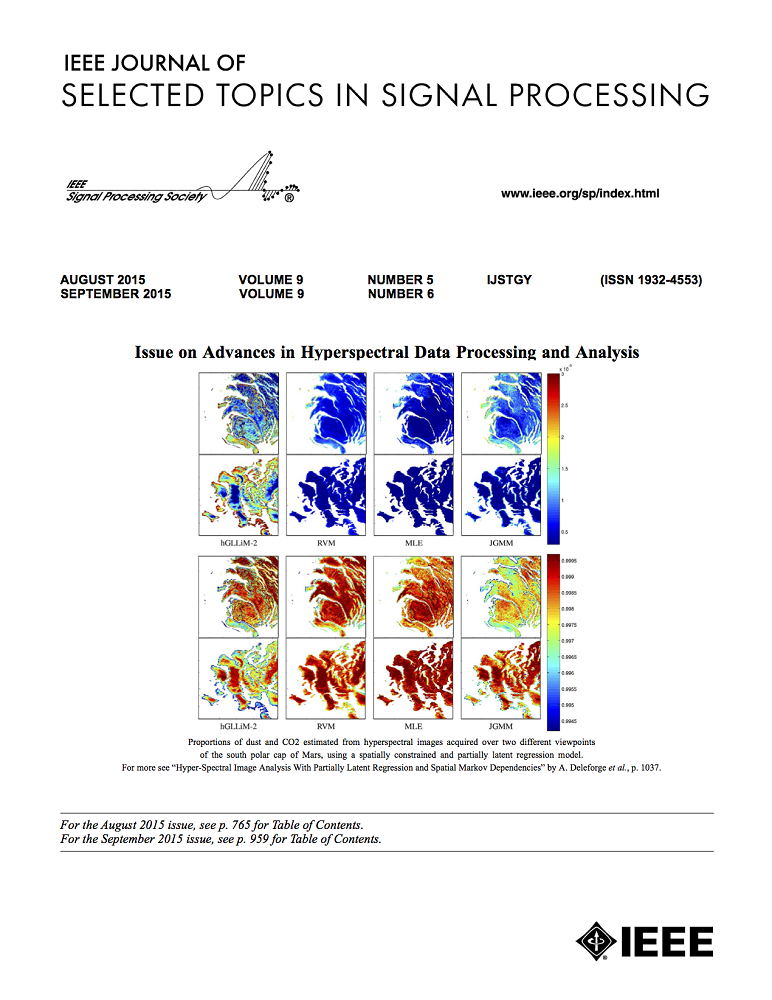Hybrid Knowledge-Data Driven Channel Semantic Acquisition and Beamforming for Cell-Free Massive MIMO
IF 8.7
1区 工程技术
Q1 ENGINEERING, ELECTRICAL & ELECTRONIC
IEEE Journal of Selected Topics in Signal Processing
Pub Date : 2023-07-26
DOI:10.1109/JSTSP.2023.3299175
引用次数: 1
Abstract
This article focuses on advancing outdoor wireless systems to better support ubiquitous extended reality (XR) applications, and close the gap with current indoor wireless transmission capabilities. We propose a hybrid knowledge-data driven method for channel semantic acquisition and multi-user beamforming in cell-free massive multiple-input multiple-output (MIMO) systems. Specifically, we firstly propose a data-driven multiple layer perceptron (MLP)-Mixer-based auto-encoder for channel semantic acquisition, where the pilot signals, CSI quantizer for channel semantic embedding, and CSI reconstruction for channel semantic extraction are jointly optimized in an end-to-end manner. Moreover, based on the acquired channel semantic, we further propose a knowledge-driven deep-unfolding multi-user beamformer, which is capable of achieving good spectral efficiency with robustness to imperfect CSI in outdoor XR scenarios. By unfolding conventional successive over-relaxation (SOR)-based linear beamforming scheme with deep learning, the proposed beamforming scheme is capable of adaptively learning the optimal parameters to accelerate convergence and improve the robustness to imperfect CSI. The proposed deep unfolding beamforming scheme can be used for access points (APs) with fully-digital array and APs with hybrid analog-digital array. Simulation results demonstrate the effectiveness of our proposed scheme in improving the accuracy of channel acquisition, as well as reducing complexity in both CSI acquisition and beamformer design. The proposed beamforming method achieves approximately 96% of the converged spectrum efficiency performance after only three iterations in downlink transmission, demonstrating its efficacy and potential to improve outdoor XR applications.无小区大规模MIMO的混合知识数据驱动信道语义获取和波束形成
本文重点介绍如何改进户外无线系统,以更好地支持无处不在的扩展现实(XR)应用,并缩小与当前室内无线传输能力的差距。提出了一种基于知识数据驱动的信道语义获取和多用户波束形成的混合方法,用于无小区大规模多输入多输出系统。具体而言,我们首先提出了一种基于数据驱动的多层感知器(MLP)- mixer的信道语义采集自编码器,其中导频信号、用于信道语义嵌入的CSI量化器和用于信道语义提取的CSI重构以端到端方式共同优化。此外,基于获取的信道语义,我们进一步提出了一种知识驱动的深度展开多用户波束形成器,该波束形成器能够在室外XR场景下获得良好的频谱效率和对不完美CSI的鲁棒性。通过对传统的基于连续过松弛(SOR)的线性波束形成方案进行深度学习,提出的波束形成方案能够自适应学习最优参数,加快收敛速度,提高对不完全CSI的鲁棒性。所提出的深度展开波束形成方案可用于具有全数字阵列的接入点和具有混合模数阵列的接入点。仿真结果证明了该方案在提高信道采集精度、降低CSI采集和波束形成器设计复杂度方面的有效性。所提出的波束形成方法在下行传输中仅经过三次迭代就能达到约96%的融合频谱效率,证明了其改善户外XR应用的有效性和潜力。
本文章由计算机程序翻译,如有差异,请以英文原文为准。
求助全文
约1分钟内获得全文
求助全文
来源期刊

IEEE Journal of Selected Topics in Signal Processing
工程技术-工程:电子与电气
CiteScore
19.00
自引率
1.30%
发文量
135
审稿时长
3 months
期刊介绍:
The IEEE Journal of Selected Topics in Signal Processing (JSTSP) focuses on the Field of Interest of the IEEE Signal Processing Society, which encompasses the theory and application of various signal processing techniques. These techniques include filtering, coding, transmitting, estimating, detecting, analyzing, recognizing, synthesizing, recording, and reproducing signals using digital or analog devices. The term "signal" covers a wide range of data types, including audio, video, speech, image, communication, geophysical, sonar, radar, medical, musical, and others.
The journal format allows for in-depth exploration of signal processing topics, enabling the Society to cover both established and emerging areas. This includes interdisciplinary fields such as biomedical engineering and language processing, as well as areas not traditionally associated with engineering.
 求助内容:
求助内容: 应助结果提醒方式:
应助结果提醒方式:


